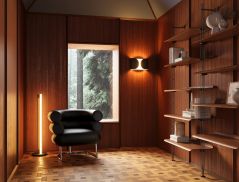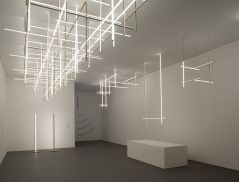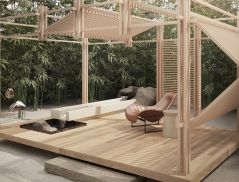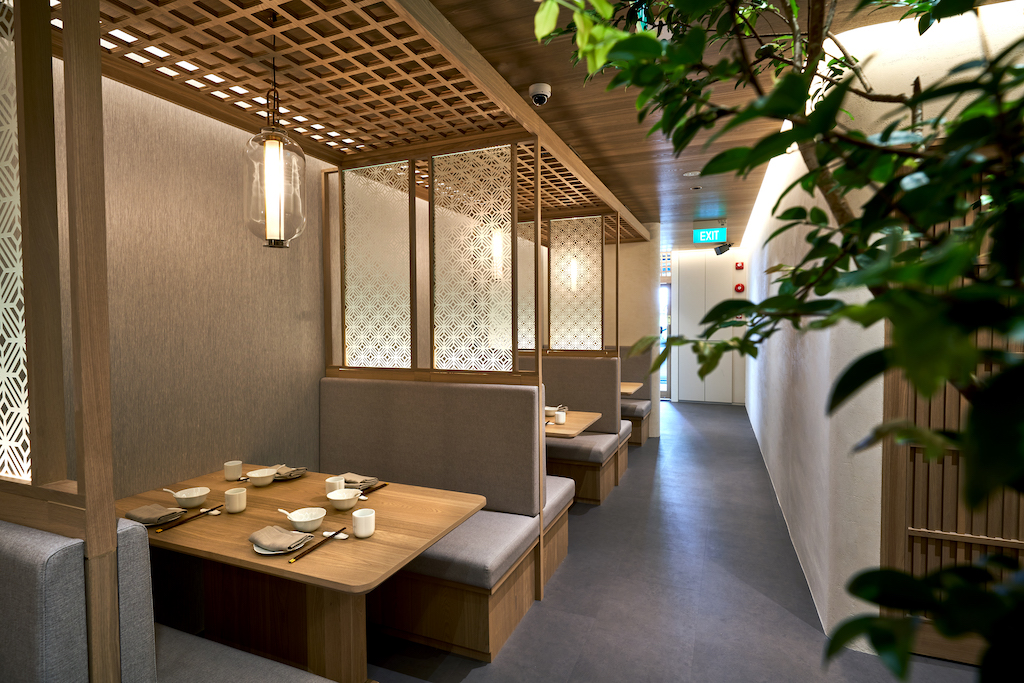
Modern Chinese restaurant Yue Bai specialises in refreshing renditions of heritage dishes rooted in ancient traditions. But it is not just its menu that embodies classical Chinese culture with a contemporary twist; its interior setting also reflects chef and co-owner Lee Hongwei’s passion for his native culture – particularly Chinese poetry, art, calligraphy and philosophy – and his appreciation for modern perspectives.
Opened in December 2022, the restaurant located on Duxton Road took about six months to design. Leading the project was Tan Hui Ee, director of local design firm Two by Four.
The Inspiration Behind Yue Bai

Tan says that she knew the space needed to reflect the care and thought that Chef Hongwei puts into each dish. “The dishes are light but they also have an incredible depth of flavour. I wanted to create an interior that reflected that sophistication, a space that does not shout for attention but instead, offers its guests an intimate dining experience,” she adds.
She drew inspiration from the name “Yue Bai”, which is a classical Chinese phrase that describes the colour of moonlight; “Yue Bai” also evokes a sense of tranquillity and comfort. With her design plan, Tan hoped to create a calming and ethereal place where diners could, as they closed the door behind them, leave the stresses of city life and life behind as they step into a new realm. “We knew from the start that we wanted a minimalist design and a controlled colour palette, but at the same time, the space needed to be warm and welcoming,” Tan shares.
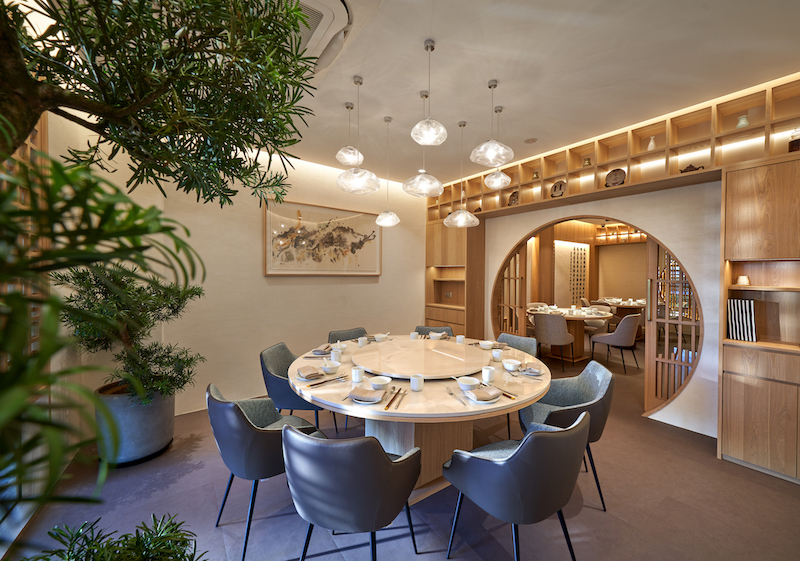
“We decided to use light wood throughout the restaurant, but we explored different manipulations of the material to achieve different textures. A subtle plaster render wall provides a neutral backdrop, but the same is also highlighted in other areas of the venue through the use of lighting, which is the third design element employed in the space,” says Tan.
Chef Hongwei’s menu embraces seasonality and is guided by the ancient wisdom of enhancing wellness through nourishment; Tan wanted the design of the restaurant to reflect this. She envisioned a “contemplative space which sets the stage for a restful moment, so that one can fully appreciate the delicate flavours of the chef’s cuisine”.
The project posed a couple of challenges along the way, Tan explains. “The restaurant spans two shophouses, one of which was quite narrow. The two spaces were only connected via one doorway, and no other openings could be created on the party wall. We also discovered that the existing ceiling was not fire-rated, so we had to make changes to the design to accommodate the reduced ceiling height.”
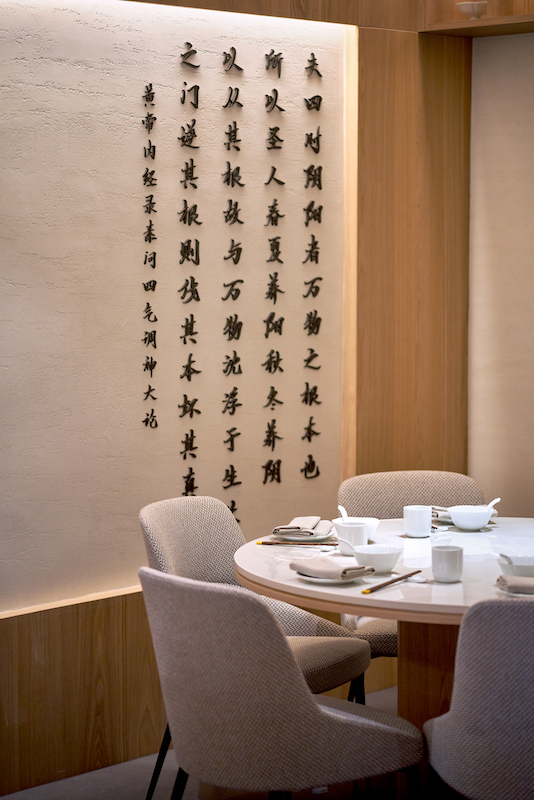

Treasures of artistic expressions
Tan worked with Vermillion Lifestyle to acquire suitable artworks to display in the restaurant. It is still a work-in-progress, but the goal is to showcase works of Asian artisans and to celebrate design and craftsmanship.
Diners will notice an excerpt from the ancient Chinese medical text called the Huangdi Neijing, on the walls of the main dining hall. Tan says that the text embodies the philosophy of Chef Hongwei’s cuisine.
The chef also practises calligraphy, and this design gesture serves as a nod to his love for the art form.
A modern Chinese painting by pioneering Singaporean artist, Goh Beng Kwan, graces the private dining room.
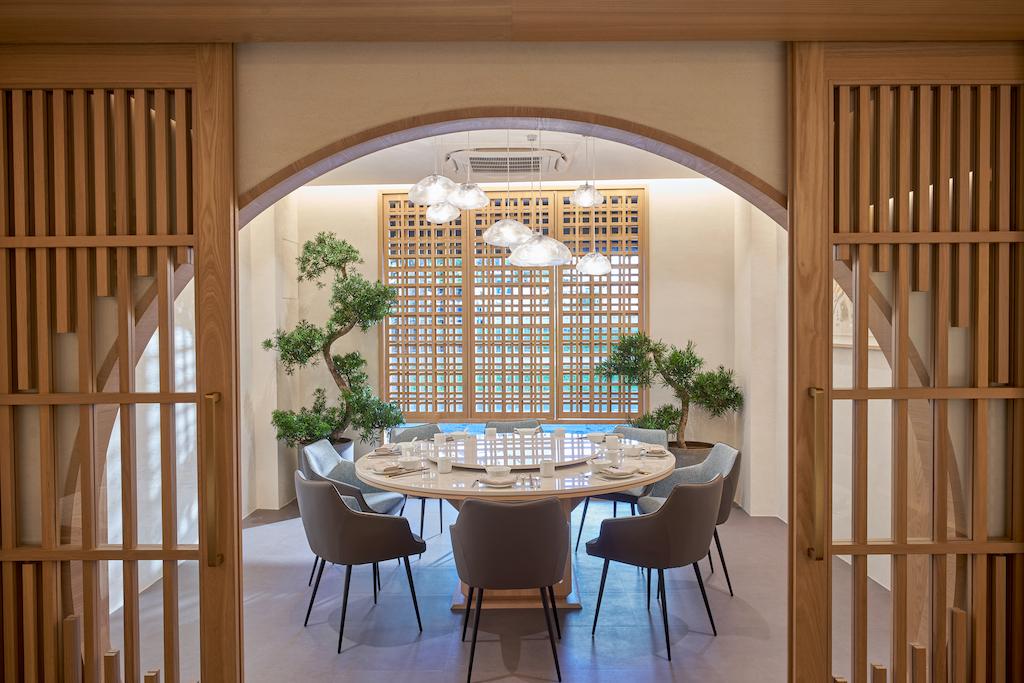
When conceptualising the interior design of the restaurant, Tan thought about creating an experience similar to meandering through a traditional Chinese garden under the moonlight. She came up with the “moon gate”, an opening in one of the walls that frames the view to the street and through which natural light streams.
“This circular opening is a traditional architectural element in Chinese gardens,” she points out. “Besides being an obvious reference to the name of the restaurant, the moon gate creates spatial depth to the interior and functionally allows the private room to be used as an extension of the main dining room.”
Yue Bai features three dining areas – intimate booth seating, a communal dining hall with a flexible seating arrangement, and a private dining room. “These spaces are designed to flow seamlessly into one another while creating distinct spatial experiences,” says Tan, adding that they are where cherished bonds are forged over nutritious food that comforts through the familiar tastes of home.


 Share
Share



